NUR 631 Quiz 4 Topic 1 and 2 with Answers | 100% CORRECT
Document Content and Description Below
NUR 631 Quiz 4 Topic 1 and 2 with Answers QUIZ 4: TOPIC 1 & 2 CELLULAR CHANGES AND GENETIC AND DEVELOPMENTAL DISORDERS AND IMMUNE SYSTEM, INFECTION DISEASE, AND ENVIRONMENTAL DISORDERS. 1. A 35-ye... ar-old female is diagnosed with acute pancreatitis. Her pancreas is releasing amylase and lipase, which will lead to a _________ necrosis 2. An individual is more susceptible to infections of mucous membranes when he or she has a seriously low level of which immunoglobulin antibody? 3. What is the role of natural killer (NK) cells? 4. A person with type O blood is likely to have high titers of which antibodies? 5. A cross-section of a heart from a 45-year-old African American male with long-standing hypertension who died of a stroke is most likely to show which of following adaptive changes? 6. Which type of cell adaptation occurs when normal columnar ciliated epithelial cells of the bronchial lining have been replaced by stratified squamous epithelial cells? 7. What type of necrosis results from ischemia of neurons and glial cells? 8. The two most important risk factors for type 2 diabetes are: 9. Exhaustion occurs if stress continues when which stage of the general adaptation syndrome is not successful? 10. Vaccinations are able to provide protection against certain microorganisms because of the: 11. Activation of the classical pathway begins with: 12. Examples of multifactorial diseases associated with adults include: (Select all that apply.) 13. What is the vascular effect of histamine released from mast cells? 14. The abnormal proliferation of cells in response to excessive hormonal stimulation is called: 15. Which cells lose their ability to replicate and divide? (Select all that apply.) 16. Cystic fibrosis is caused by what type of gene? 17. Which statement is true regarding immunodeficiency? 18. In the later stages of an inflammatory response, which phagocytic cell is predominant? 19. What genetic process is likely responsible for the occurrence of asthma in only one of a pair of identical twins? 20. After sexual transmission of HIV, a person can be infected yet seronegative for how many months? 6 to 14 21. What is the most common cause of Down syndrome? 3 22. Which type of immunity is produced by an individual after either natural exposure to the antigen or after immunization against the antigen? 23. The development of scar tissue follows which pattern of necrosis in cardiac muscle tissue following a myocardial infarction? 24. A couple has two children diagnosed with an autosomal dominant genetic disease. What is the probability that the next child will have the same genetic disease? 25. Where are antibodies produced? [Show More]
Last updated: 2 years ago
Preview 1 out of 3 pages

Buy this document to get the full access instantly
Instant Download Access after purchase
Buy NowInstant download
We Accept:

Reviews( 0 )
$11.00
Can't find what you want? Try our AI powered Search
Document information
Connected school, study & course
About the document
Uploaded On
Feb 20, 2021
Number of pages
3
Written in
Additional information
This document has been written for:
Uploaded
Feb 20, 2021
Downloads
0
Views
45


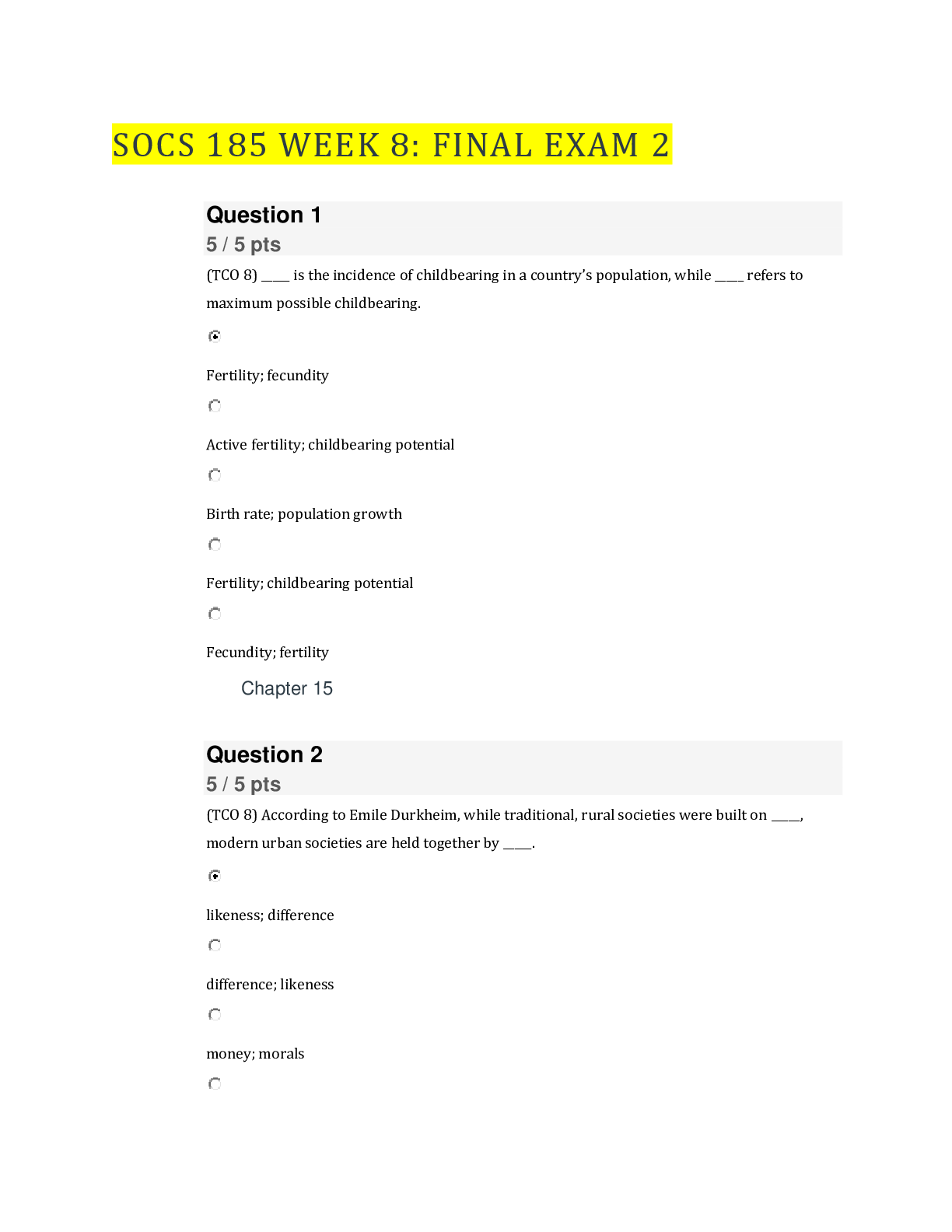
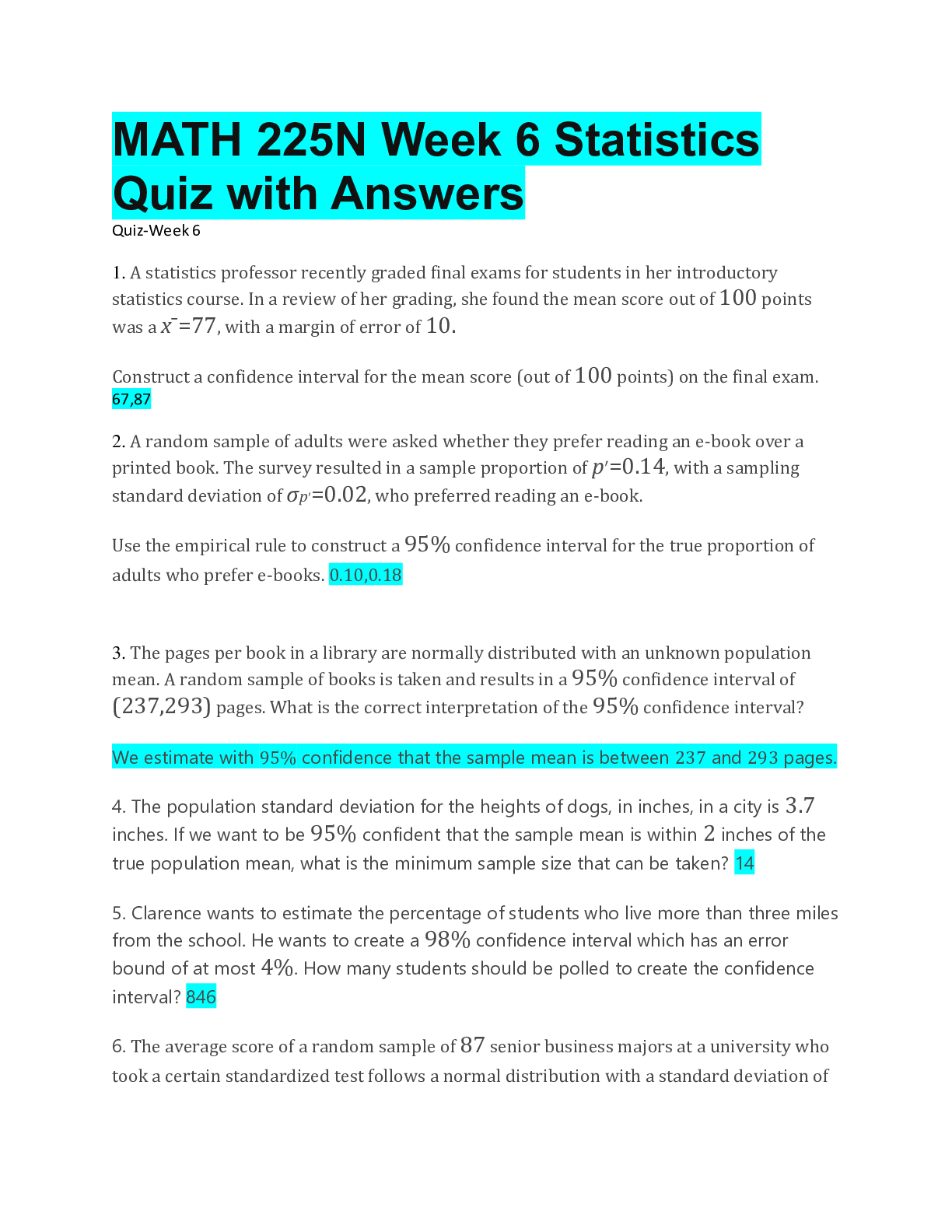



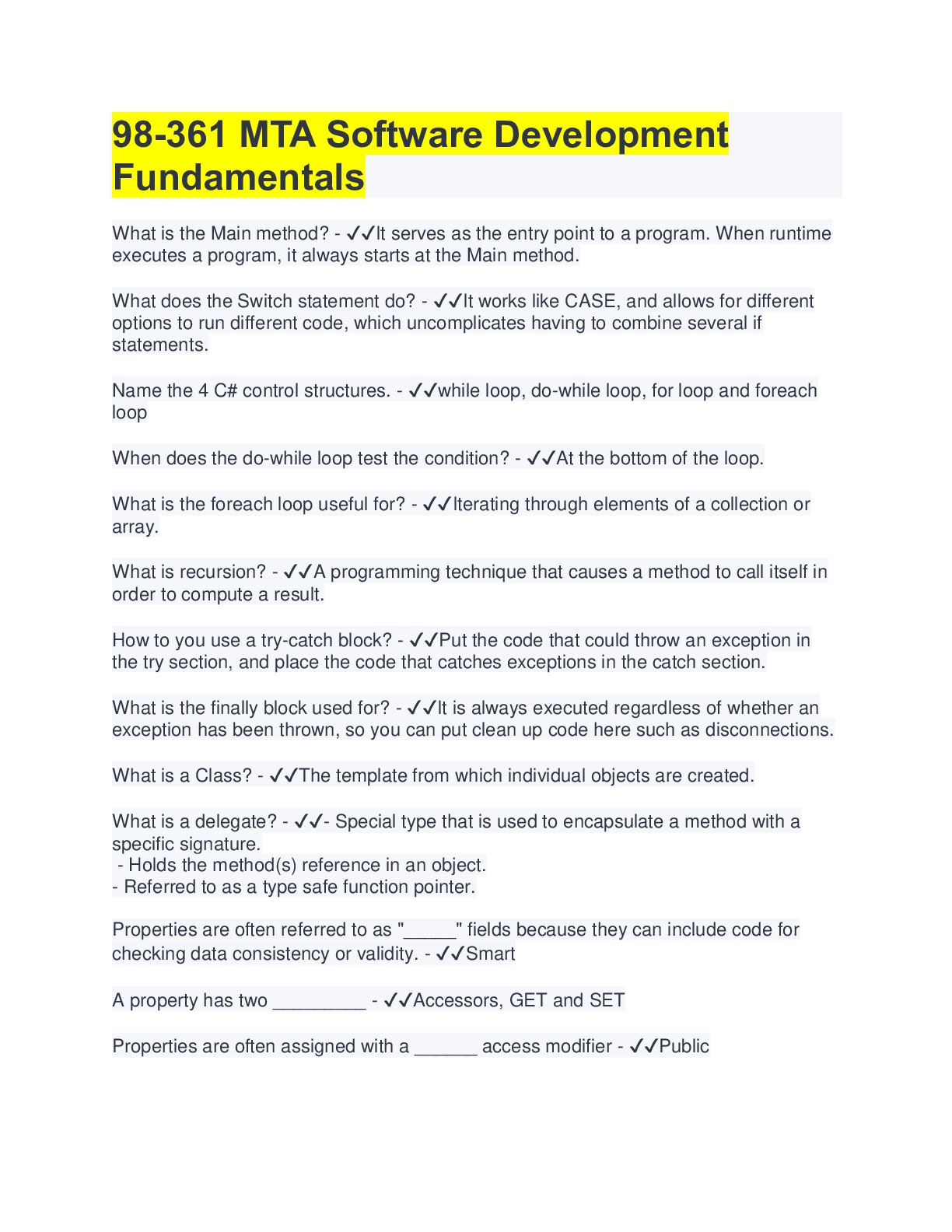






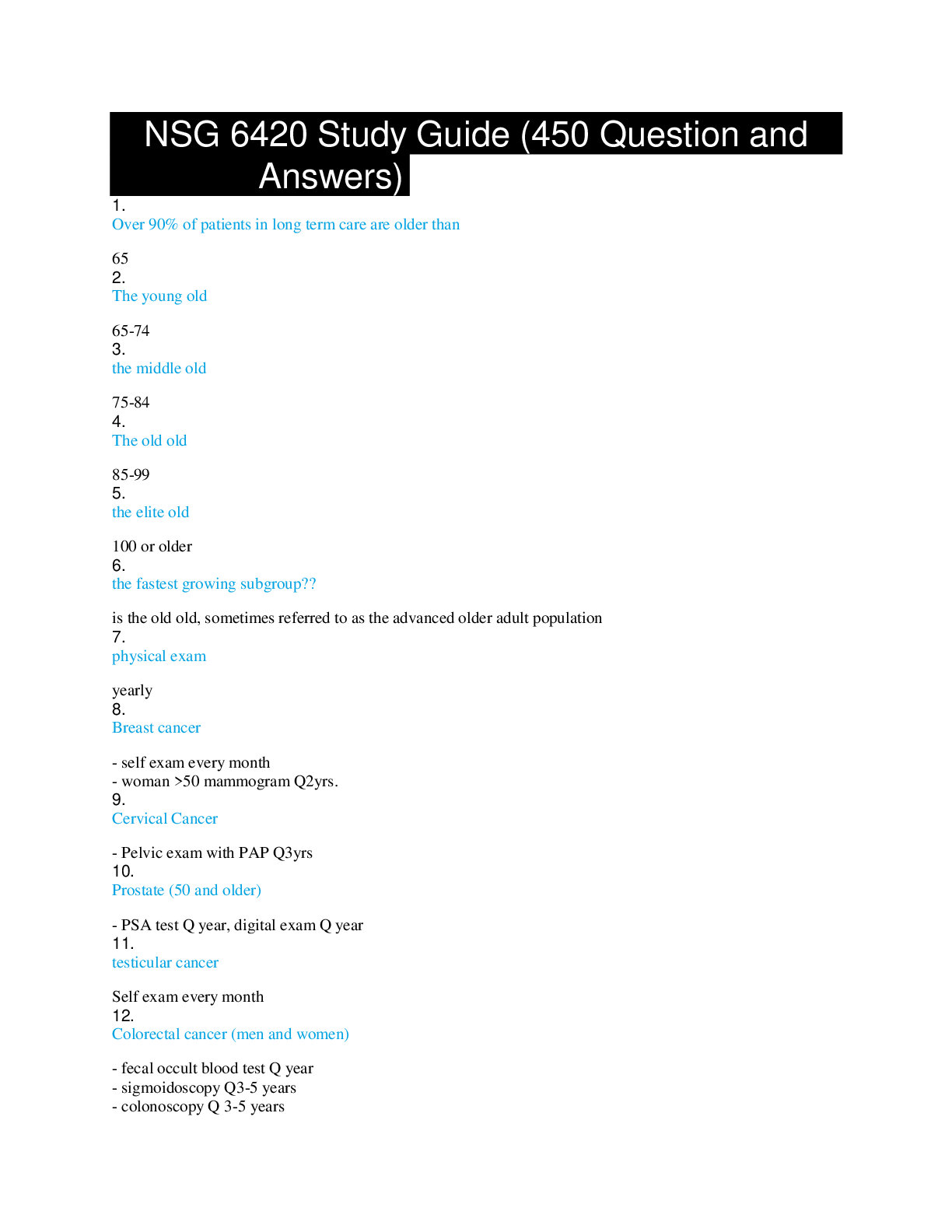




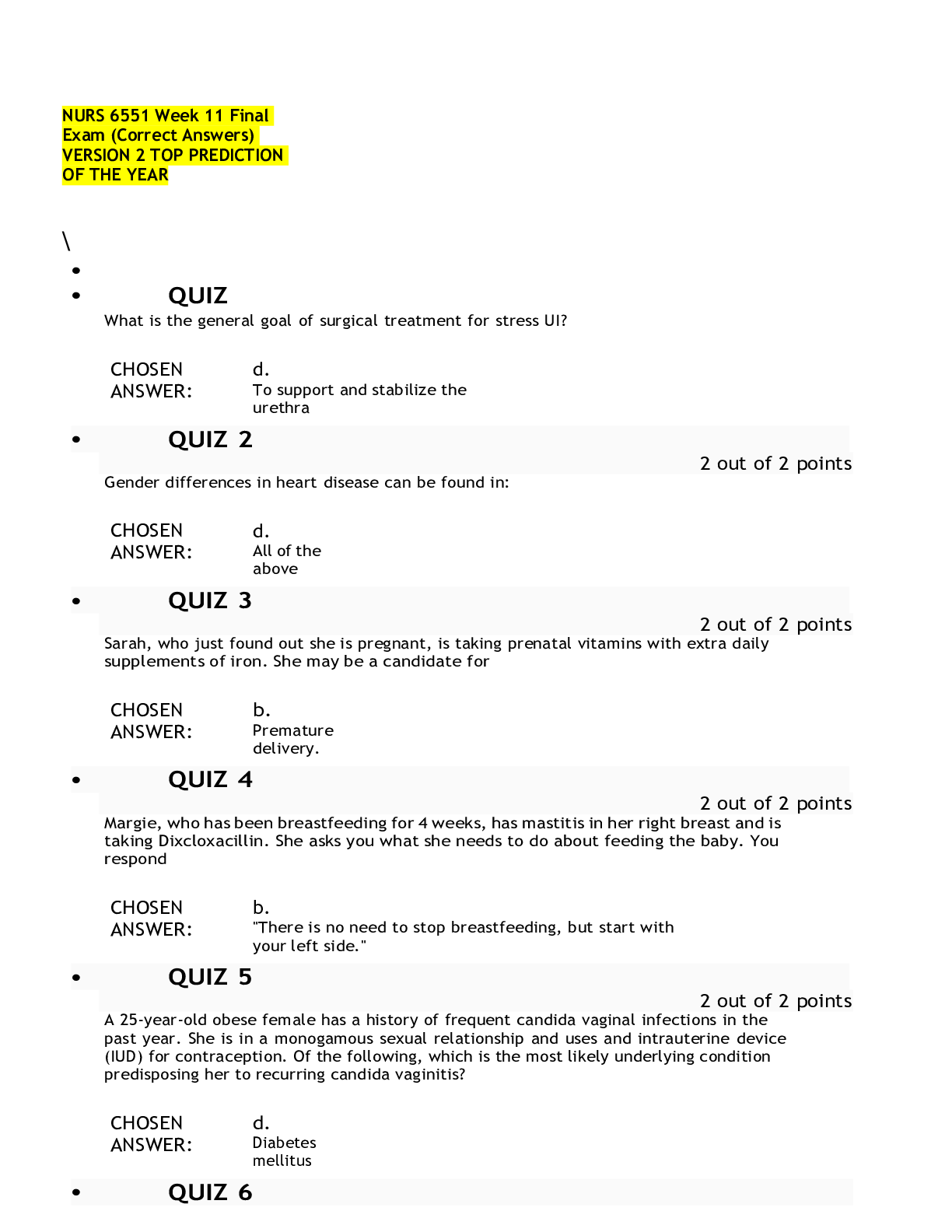
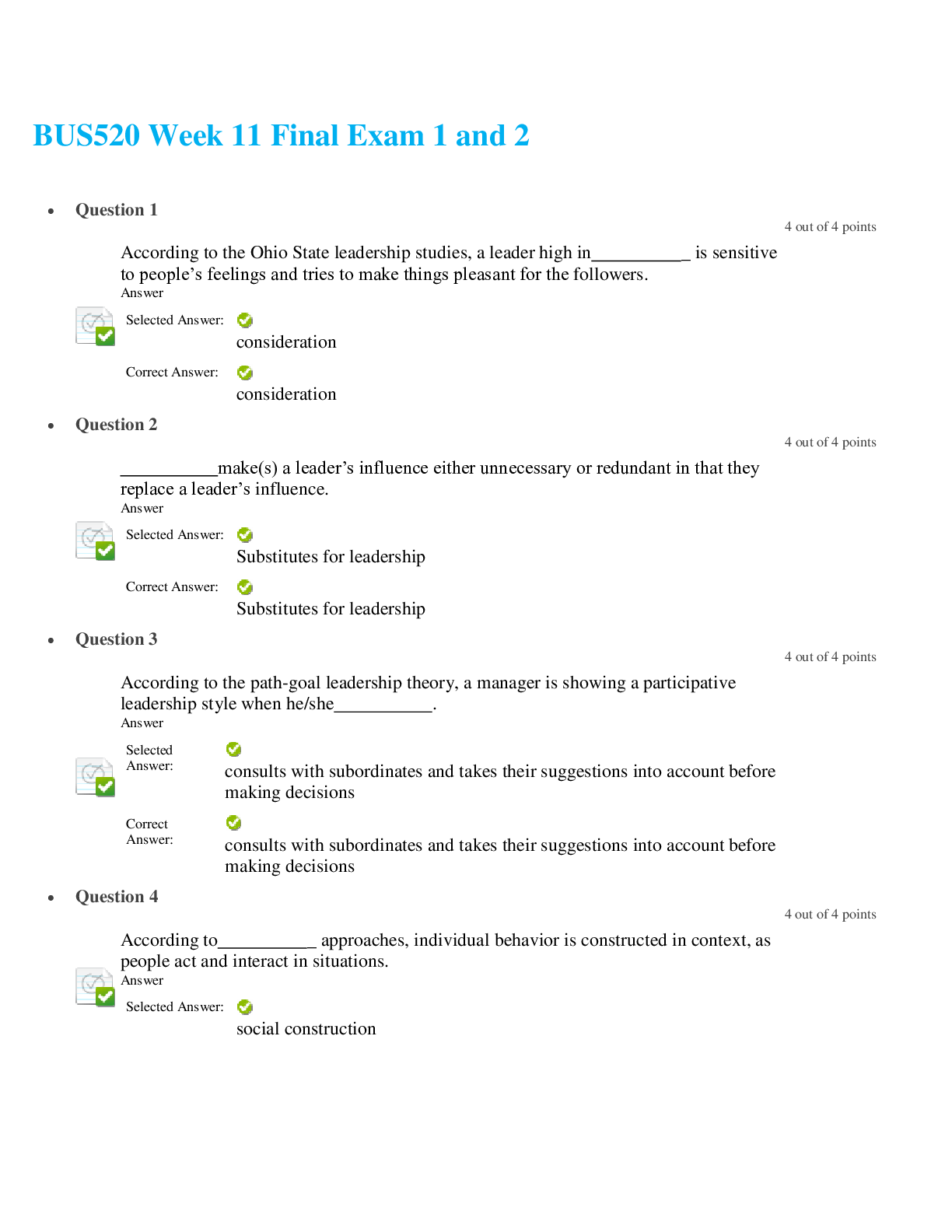
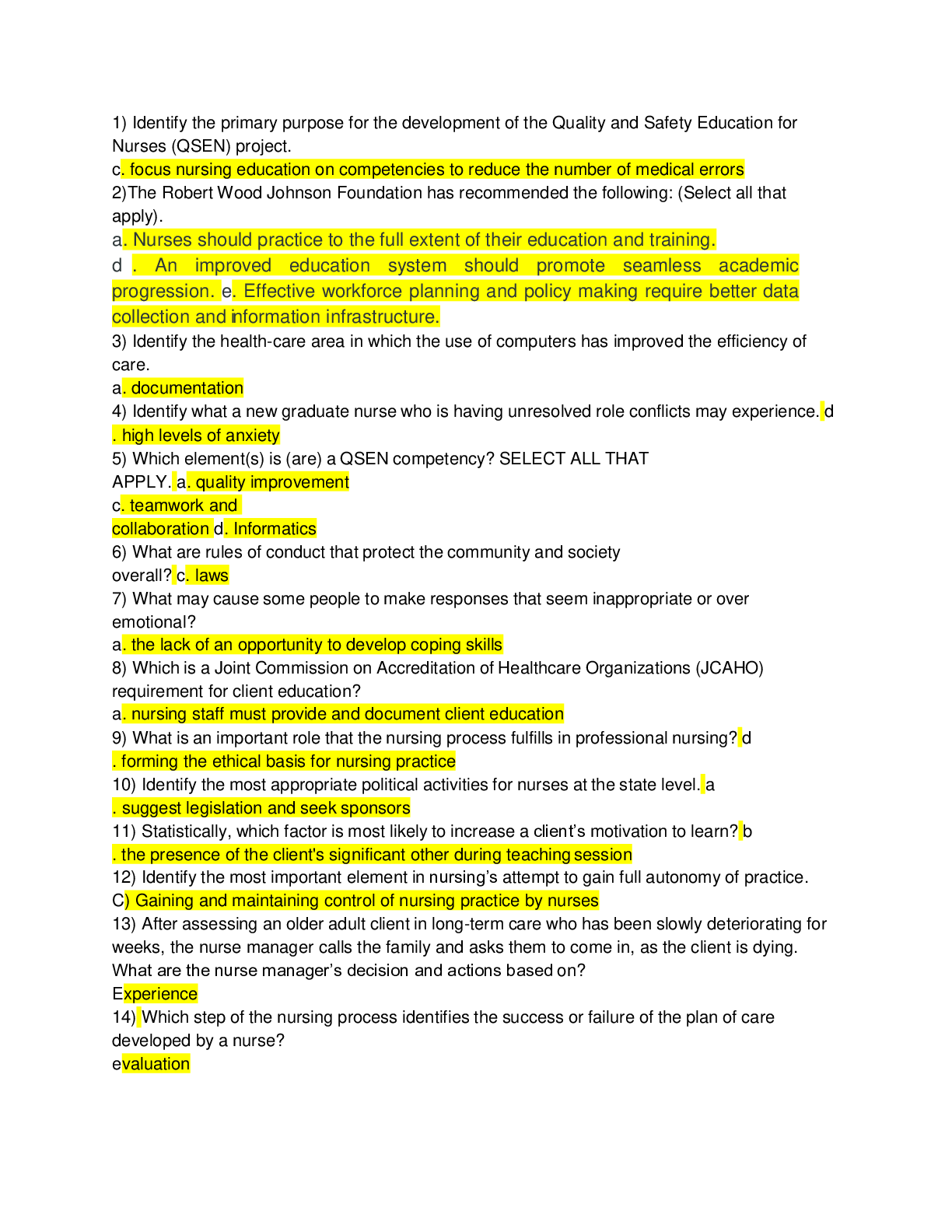

.png)


